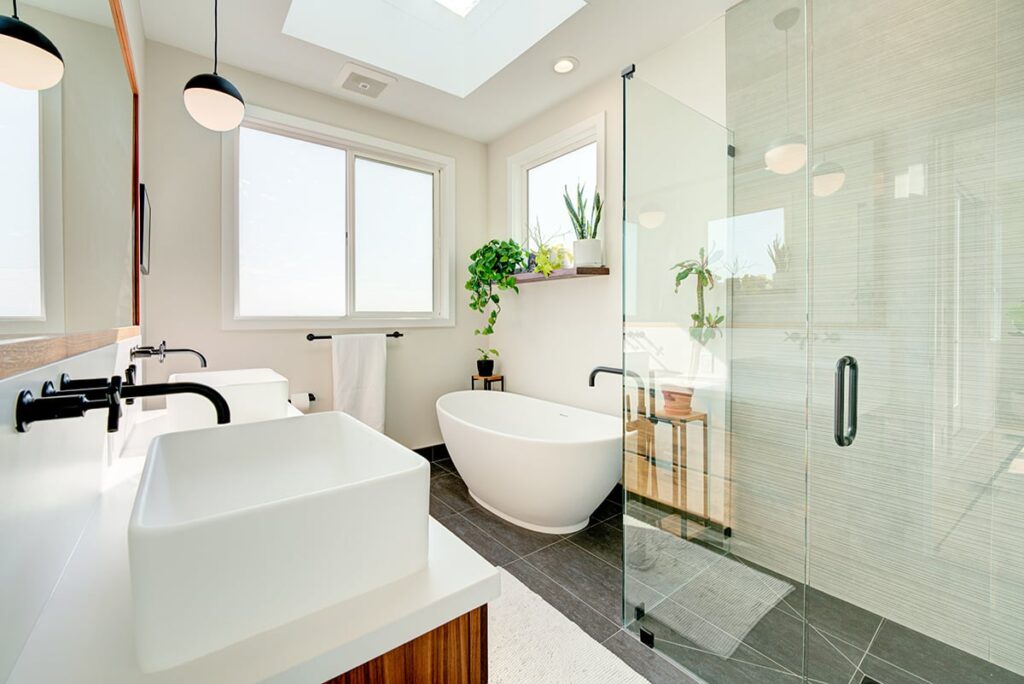
Bathroom Humidity Control Naturally: Simple and Effective Tips
Managing humidity in the bathroom is crucial for maintaining a healthy home environment. Excess moisture can lead to mold growth, unpleasant odors, and damage to fixtures. Discovering ways to control bathroom humidity naturally can enhance the longevity of your bathroom and improve indoor air quality. This comprehensive guide will explore natural methods to keep your bathroom dry and fresh.

Understanding the Causes of Bathroom Humidity
Bathrooms are prone to high humidity levels due to the frequent use of water from showers, baths, and sinks. This moisture can linger, creating a breeding ground for mold and mildew. Understanding the root causes of humidity can help you tackle the problem effectively.
Common Sources of Bathroom Humidity
The main contributors to bathroom humidity include hot showers, insufficient ventilation, and water leaks. These elements can combine to create a damp environment, making it essential to address each one to maintain a dry space.
Natural Ventilation Solutions
Good ventilation is a key factor in controlling humidity. Natural solutions include opening windows and using exhaust fans to circulate fresh air. Placing a small fan in the bathroom can also help disperse moist air quickly.
Utilizing Windows and Exhaust Fans
Opening windows during and after showers allows humid air to escape, while exhaust fans are crucial for drawing moisture out of the room. Ensure your exhaust fan is functioning correctly and use it regularly.
Dehumidifying Plants and Natural Absorbents
Certain plants, such as ferns and peace lilies, can absorb moisture from the air, making them excellent choices for bathroom dcor. Additionally, natural absorbents like charcoal briquettes and baking soda can be strategically placed to absorb excess moisture.
Choosing the Right Plants
Plants like Boston ferns and spider plants thrive in humid environments and can help reduce moisture levels. They also add a touch of greenery to your bathroom, enhancing its aesthetic appeal.
Implementing Proper Insulation
Insulating your bathroom walls and pipes can prevent condensation, a common cause of humidity. Proper insulation ensures that warm air does not come into contact with cold surfaces, reducing moisture buildup.
Insulation Techniques
Consider using foam pipe insulation and insulating paint to reduce condensation. These methods are cost-effective and can be easily implemented in most bathrooms.
Using Water-efficient Fixtures
Installing water-saving fixtures can reduce the amount of water vapor released into the air. This includes low-flow showerheads and faucets, which can significantly decrease humidity levels.
For more ideas on eco-friendly bathroom fixtures, visit water-efficient bathroom fixtures.
Regular Maintenance and Cleaning
Keeping your bathroom clean and well-maintained can prevent mold and mildew growth. Regularly checking for leaks and repairing them promptly will also help manage humidity.
Cleaning Tips
Use natural cleaning solutions like vinegar and baking soda to scrub away mold and mildew. These solutions are effective and safe for the environment.
Conclusion
By implementing these natural methods, you can efficiently manage bathroom humidity control naturally. These simple steps will not only improve the air quality in your home but also keep your bathroom looking and smelling fresh. For more eco-friendly bathroom renovation ideas, check out eco-friendly bathroom renovations.

FAQs
Can plants really help with humidity control in bathrooms?
Yes, certain plants can absorb moisture from the air, helping to reduce humidity levels naturally.
What are some signs of high humidity in a bathroom?
Common signs include condensation on mirrors and windows, a musty smell, and visible mold or mildew.
How often should I use the bathroom exhaust fan to control humidity?
It’s best to use the exhaust fan during and for at least 20 minutes after showers to effectively reduce humidity.
This article contains affiliate links. We may earn a commission at no extra cost to you.